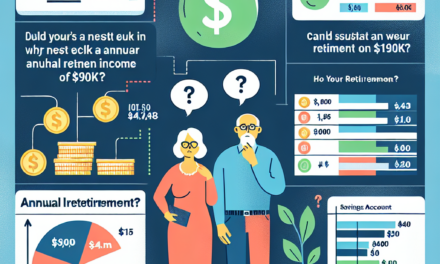“Spring Housing Market: Poised for a Bloom or a Bust?”
Introduction
The spring housing market is traditionally a period of heightened activity, characterized by increased listings, buyer interest, and competitive bidding. However, recent economic fluctuations, interest rate changes, and evolving buyer preferences have cast uncertainty over its potential rebound. As the season approaches, real estate professionals and potential buyers alike are keenly observing market indicators to gauge whether the spring will usher in a revitalized housing market or continue to reflect the challenges of previous months. Key factors such as mortgage rates, inventory levels, and consumer confidence will play pivotal roles in shaping the trajectory of the market. Understanding these dynamics is crucial for stakeholders aiming to navigate the complexities of the upcoming season effectively.
Factors Influencing the Spring Housing Market Rebound
The spring housing market is traditionally a period of heightened activity, characterized by an increase in both home listings and buyer interest. However, the question of whether the market will rebound this spring hinges on several interrelated factors. Understanding these elements is crucial for stakeholders, including potential buyers, sellers, and real estate professionals, as they navigate the complexities of the housing market.
To begin with, economic conditions play a pivotal role in shaping the housing market’s trajectory. A robust economy, marked by low unemployment rates and rising wages, typically boosts consumer confidence, encouraging more people to invest in homeownership. Conversely, economic uncertainty or downturns can dampen buyer enthusiasm, as individuals may become more cautious about making significant financial commitments. Therefore, monitoring economic indicators such as job growth and consumer sentiment can provide valuable insights into the potential for a market rebound.
In addition to economic factors, interest rates are a critical determinant of housing market dynamics. Lower interest rates generally make borrowing more affordable, thereby increasing the pool of potential homebuyers. This can lead to heightened demand, which, in turn, may stimulate a market rebound. However, if interest rates rise, borrowing costs increase, potentially deterring prospective buyers and slowing market activity. Consequently, the policies of central banks and their impact on interest rates are essential considerations for predicting market trends.
Another significant factor influencing the spring housing market is the availability of housing inventory. A balanced market requires a sufficient supply of homes to meet buyer demand. In recent years, many markets have experienced a shortage of available homes, leading to increased competition among buyers and driving up prices. If inventory levels remain low, it could hinder a market rebound by limiting options for buyers and sustaining high price levels. On the other hand, an increase in new home construction or a rise in existing home listings could alleviate inventory constraints and support a more robust market recovery.
Furthermore, demographic trends also play a role in shaping housing market outcomes. The preferences and behaviors of different age groups, particularly millennials and Generation Z, can significantly impact demand. As these younger generations enter the housing market, their desire for homeownership and their financial readiness to purchase homes will influence market dynamics. Additionally, the aging baby boomer population may affect supply, as older homeowners decide whether to downsize or relocate, potentially freeing up existing homes for sale.
Moreover, government policies and regulations can either facilitate or hinder a housing market rebound. Tax incentives, subsidies for first-time homebuyers, and zoning laws that encourage new construction can stimulate market activity. Conversely, restrictive regulations or changes in tax policy may pose challenges to both buyers and sellers, potentially stalling a market recovery. Therefore, staying informed about legislative developments is crucial for anticipating their impact on the housing market.
In conclusion, the potential for a spring housing market rebound is contingent upon a confluence of factors, including economic conditions, interest rates, housing inventory, demographic trends, and government policies. Each of these elements can either independently or collectively influence market dynamics, making it essential for stakeholders to remain vigilant and adaptable. By closely monitoring these factors, individuals and businesses can better position themselves to capitalize on opportunities or mitigate risks in the ever-evolving housing market landscape.
Historical Trends in Spring Housing Market Recovery
The spring housing market has long been a focal point for real estate professionals and potential homebuyers alike, as it traditionally marks a period of increased activity and renewed optimism. Historically, the spring season has been characterized by a surge in home listings and buyer interest, often leading to a rebound in housing market dynamics following the typically slower winter months. To understand whether the spring housing market will rebound, it is essential to examine historical trends and the factors that have influenced past recoveries.
In previous years, the spring housing market has demonstrated a consistent pattern of recovery, driven by a combination of seasonal factors and economic conditions. As the weather improves, potential buyers are more inclined to attend open houses and explore new neighborhoods, leading to an uptick in market activity. Additionally, families often prefer to move during the spring and summer months to minimize disruptions to the school year, further contributing to increased demand. This seasonal demand has historically resulted in a rise in home prices and a reduction in the average time homes spend on the market.
However, the strength of the spring housing market rebound is not solely dependent on seasonal factors. Economic conditions play a crucial role in shaping market dynamics. For instance, low interest rates have historically spurred buyer interest, as they make mortgage financing more affordable. Conversely, high interest rates can dampen buyer enthusiasm, as they increase the cost of borrowing. Moreover, broader economic indicators such as employment rates and consumer confidence also influence the housing market. A robust job market and high consumer confidence typically lead to increased homebuying activity, while economic uncertainty can have the opposite effect.
In addition to economic conditions, government policies and interventions have historically impacted the spring housing market. For example, tax incentives for homebuyers or changes in mortgage lending standards can either stimulate or constrain market activity. During the aftermath of the 2008 financial crisis, government programs aimed at stabilizing the housing market played a significant role in facilitating recovery. These interventions highlight the importance of policy measures in shaping housing market trends.
While historical trends provide valuable insights, it is important to recognize that each spring housing market is influenced by a unique set of circumstances. The COVID-19 pandemic, for instance, introduced unprecedented challenges and disruptions to the housing market. In the early months of the pandemic, uncertainty and lockdown measures led to a temporary slowdown in market activity. However, as restrictions eased and remote work became more prevalent, there was a notable shift in housing preferences, with increased demand for suburban and rural properties. This shift, coupled with historically low interest rates, contributed to a robust rebound in the housing market during the subsequent spring seasons.
Looking ahead, the question of whether the spring housing market will rebound hinges on a variety of factors. Economic conditions, including interest rates and employment levels, will undoubtedly play a pivotal role. Additionally, potential changes in government policies and the ongoing impact of the pandemic will continue to shape market dynamics. While historical trends suggest a propensity for recovery during the spring months, the unique challenges and opportunities of the current economic landscape will ultimately determine the trajectory of the housing market. As such, real estate professionals and potential homebuyers should remain vigilant and adaptable, closely monitoring economic indicators and market trends to make informed decisions in the ever-evolving housing market landscape.
Expert Predictions for the Spring Housing Market
As the spring housing market approaches, industry experts are keenly observing various economic indicators to predict whether the market will experience a rebound. The housing market has been subject to significant fluctuations over the past few years, influenced by factors such as interest rates, supply chain disruptions, and changing consumer preferences. Consequently, understanding the potential trajectory of the market this spring requires a comprehensive analysis of these elements and their interplay.
To begin with, interest rates play a pivotal role in shaping the housing market’s dynamics. Over the past year, the Federal Reserve has implemented a series of interest rate hikes to combat inflation, which has, in turn, affected mortgage rates. Higher mortgage rates typically dampen buyer enthusiasm, as they increase the cost of borrowing. However, some experts suggest that if inflation shows signs of stabilizing, the Federal Reserve might adopt a more cautious approach, potentially leading to a stabilization or even a slight reduction in interest rates. Such a scenario could invigorate buyer interest, thereby contributing to a market rebound.
In addition to interest rates, the supply of available homes is another critical factor influencing the housing market. The pandemic-induced disruptions in the supply chain have led to delays in construction and a shortage of building materials, which have constrained the supply of new homes. However, recent reports indicate that these supply chain issues are gradually easing, allowing builders to ramp up construction activities. An increase in housing inventory could provide more options for prospective buyers, thereby stimulating market activity. Nevertheless, it remains to be seen whether the pace of new construction will be sufficient to meet the pent-up demand.
Moreover, consumer preferences have undergone a transformation in the wake of the pandemic, with many individuals seeking homes that accommodate remote work and offer more space. This shift has led to increased demand in suburban and rural areas, while urban markets have experienced a relative slowdown. As remote work policies continue to evolve, it is likely that these preferences will persist, influencing market trends this spring. Experts suggest that areas offering a balance of affordability, space, and amenities may see heightened activity, potentially driving a localized rebound in those markets.
Furthermore, the broader economic context cannot be overlooked when assessing the housing market’s prospects. Employment levels, wage growth, and consumer confidence are all integral to the health of the housing market. Recent data indicates a robust labor market, with low unemployment rates and rising wages, which could bolster consumer confidence and purchasing power. If these positive economic trends continue, they may provide a solid foundation for a housing market recovery.
In conclusion, while the spring housing market faces several challenges, there are also promising signs that could lead to a rebound. The interplay of interest rates, housing supply, consumer preferences, and broader economic conditions will ultimately determine the market’s trajectory. As experts continue to monitor these factors, potential buyers and sellers should remain informed and adaptable to capitalize on emerging opportunities. While uncertainty remains, the possibility of a revitalized housing market this spring offers a glimmer of hope for industry stakeholders and consumers alike.
Impact of Interest Rates on Spring Housing Market Dynamics

The spring housing market has traditionally been a period of heightened activity, characterized by an increase in both listings and buyer interest. However, the dynamics of this market are significantly influenced by prevailing interest rates, which play a crucial role in shaping buyer behavior and overall market conditions. As we approach the upcoming spring season, many are left wondering whether the housing market will experience a rebound, particularly in light of fluctuating interest rates.
To understand the potential impact of interest rates on the spring housing market, it is essential to consider how these rates affect affordability and buyer sentiment. When interest rates are low, borrowing costs decrease, making it more affordable for potential buyers to finance home purchases. This often leads to an increase in demand, as more individuals are able to enter the market. Conversely, when interest rates rise, the cost of borrowing increases, which can dampen buyer enthusiasm and reduce the number of active participants in the market.
In recent years, interest rates have experienced significant volatility, influenced by a variety of economic factors, including inflationary pressures and monetary policy decisions. As central banks navigate the delicate balance between stimulating economic growth and controlling inflation, their decisions regarding interest rates have direct implications for the housing market. For instance, if central banks opt to raise interest rates to combat inflation, this could lead to a cooling effect on the housing market, as higher rates may deter potential buyers.
Moreover, the relationship between interest rates and housing market dynamics is not solely confined to buyer behavior. Sellers, too, are affected by changes in interest rates, as these can influence their decisions regarding when to list their properties. In a low-interest-rate environment, sellers may be more inclined to list their homes, anticipating a larger pool of potential buyers. On the other hand, in a high-interest-rate scenario, sellers might delay listing their properties, waiting for more favorable conditions.
As we look ahead to the spring housing market, it is important to consider the broader economic context in which these interest rate changes are occurring. Economic indicators such as employment rates, consumer confidence, and wage growth all play a role in shaping the housing market landscape. A robust economy with strong job growth and rising wages can offset some of the negative impacts of higher interest rates, as increased consumer confidence and purchasing power may sustain demand in the housing market.
Furthermore, regional variations in housing market conditions must also be taken into account. Different areas may experience varying levels of sensitivity to interest rate changes, depending on local economic conditions and housing supply constraints. For example, regions with limited housing inventory may continue to see strong demand despite rising interest rates, as buyers compete for a scarce number of available properties.
In conclusion, while interest rates are a critical factor influencing the spring housing market, they are not the sole determinant of market dynamics. A comprehensive analysis must consider the interplay of interest rates with other economic indicators and regional factors. As we anticipate the upcoming spring season, the question of whether the housing market will rebound remains contingent upon these complex and interrelated variables. Ultimately, the ability of the market to adapt to changing interest rate environments will be a key determinant of its trajectory in the months ahead.
Regional Variations in Spring Housing Market Rebound
As the spring housing market approaches, potential buyers and sellers are keenly observing regional variations that may influence the market’s rebound. The housing market, often characterized by its cyclical nature, typically experiences a surge in activity during the spring months. However, the extent of this rebound can vary significantly across different regions, influenced by a myriad of factors including economic conditions, demographic trends, and local policies.
To begin with, economic conditions play a pivotal role in shaping the housing market’s trajectory. Regions with robust economic growth, characterized by low unemployment rates and rising incomes, are more likely to experience a stronger rebound. For instance, metropolitan areas with thriving industries such as technology or finance often see increased demand for housing as job opportunities attract new residents. Conversely, regions facing economic stagnation or decline may witness a more subdued market recovery, as potential buyers remain cautious amidst financial uncertainty.
In addition to economic factors, demographic trends also contribute to regional variations in the housing market. Areas experiencing population growth, particularly those attracting younger demographics, tend to see heightened demand for housing. This is especially true in urban centers where amenities and employment opportunities are abundant. On the other hand, regions with aging populations or declining birth rates may face challenges in sustaining housing demand, potentially leading to a slower market rebound.
Moreover, local policies and regulations can significantly impact the housing market’s performance. Regions with favorable zoning laws and streamlined permitting processes often facilitate new construction, thereby increasing housing supply to meet demand. In contrast, areas with stringent regulations may face supply constraints, driving up prices and potentially dampening market activity. Additionally, government initiatives such as tax incentives for first-time homebuyers or subsidies for affordable housing can stimulate demand and contribute to a more robust market recovery.
Furthermore, the availability of financing options is another critical factor influencing regional housing market variations. In regions where credit is readily accessible and interest rates remain low, potential buyers are more likely to enter the market, boosting demand. However, in areas where lending standards are stringent or interest rates are on the rise, the pool of qualified buyers may shrink, leading to a more tepid rebound.
It is also important to consider the impact of external factors such as natural disasters or geopolitical events, which can disrupt regional housing markets. For instance, areas prone to hurricanes or wildfires may experience fluctuations in housing demand as potential buyers weigh the risks associated with such events. Similarly, regions affected by political instability or trade tensions may see shifts in market dynamics as economic uncertainty influences buyer behavior.
In conclusion, the spring housing market’s rebound is not a uniform phenomenon but rather a complex interplay of regional factors. Economic conditions, demographic trends, local policies, financing availability, and external influences all contribute to the variations observed across different areas. As stakeholders navigate this landscape, understanding these regional nuances is crucial for making informed decisions in the ever-evolving housing market. By closely monitoring these factors, buyers, sellers, and policymakers can better anticipate and respond to the challenges and opportunities that lie ahead in the spring housing market.
Strategies for Buyers in a Rebounding Spring Housing Market
As the spring housing market approaches, potential buyers are keenly observing whether it will rebound after a period of uncertainty. The housing market, often influenced by a myriad of factors such as economic conditions, interest rates, and consumer confidence, has shown signs of volatility in recent years. Consequently, buyers must adopt strategic approaches to navigate this potentially rebounding market effectively. Understanding the dynamics at play is crucial for making informed decisions and securing favorable outcomes.
To begin with, it is essential for buyers to stay informed about current market trends and economic indicators. Monitoring interest rates is particularly important, as they directly impact mortgage affordability. In a rebounding market, interest rates may fluctuate, and buyers should be prepared to act swiftly if rates begin to rise. By securing a mortgage pre-approval, buyers can lock in a favorable rate, providing a degree of financial certainty and enhancing their bargaining power when making offers.
Moreover, buyers should consider the importance of timing in a rebounding market. Spring is traditionally a busy season for real estate, with increased listings and heightened competition among buyers. Therefore, being prepared to act quickly is advantageous. This involves having a clear understanding of one’s budget, desired property features, and preferred locations. By defining these parameters early on, buyers can streamline their search and respond promptly when suitable properties become available.
In addition to timing, buyers should also focus on building a strong team of professionals to guide them through the process. Engaging an experienced real estate agent who possesses in-depth knowledge of the local market can provide invaluable insights and assistance. A skilled agent can help identify properties that meet the buyer’s criteria, negotiate favorable terms, and navigate any potential challenges that may arise during the transaction. Furthermore, collaborating with a reputable mortgage broker can ensure that buyers have access to the best financing options available.
As the market rebounds, competition among buyers is likely to intensify, necessitating strategic negotiation skills. Buyers should be prepared to make competitive offers while remaining mindful of their budget constraints. In some cases, it may be beneficial to include contingencies in the offer, such as a home inspection or financing contingency, to protect the buyer’s interests. However, in a highly competitive market, being flexible with contingencies can make an offer more attractive to sellers.
Additionally, buyers should not overlook the importance of conducting thorough due diligence on potential properties. This includes researching the neighborhood, assessing the condition of the property, and understanding any potential future developments that may impact property values. By gathering comprehensive information, buyers can make informed decisions and avoid potential pitfalls.
Finally, it is crucial for buyers to maintain a long-term perspective when entering a rebounding housing market. While short-term fluctuations may occur, real estate has historically proven to be a sound investment over time. Buyers should consider their long-term goals and how a particular property aligns with those objectives. By focusing on properties that offer potential for appreciation and meet their lifestyle needs, buyers can position themselves for success in a dynamic market.
In conclusion, as the spring housing market shows signs of rebounding, buyers must adopt strategic approaches to navigate the evolving landscape. By staying informed, acting swiftly, building a strong team, employing effective negotiation tactics, conducting thorough due diligence, and maintaining a long-term perspective, buyers can enhance their chances of success in this competitive environment.
The Role of Government Policies in Spring Housing Market Recovery
As the spring housing market approaches, many are keenly observing whether it will experience a rebound, particularly in light of recent economic fluctuations and the ongoing impact of the pandemic. A critical factor in this potential recovery is the role of government policies, which have historically played a significant part in shaping housing market dynamics. Understanding these policies and their implications can provide valuable insights into the market’s trajectory.
To begin with, government policies related to interest rates are pivotal in influencing the housing market. The Federal Reserve’s decisions on interest rates can either stimulate or cool down housing demand. Lower interest rates generally make borrowing more affordable, encouraging potential homebuyers to enter the market. Conversely, higher rates can deter buyers, leading to a slowdown in market activity. As the spring season approaches, any adjustments in interest rates will likely have a direct impact on housing demand, potentially aiding in the market’s recovery.
In addition to interest rates, government initiatives aimed at supporting homeownership can also play a crucial role. Programs that provide financial assistance to first-time homebuyers, such as down payment assistance or tax credits, can lower the barriers to entry for many individuals. These initiatives not only help increase the pool of potential buyers but also stimulate demand, which can contribute to a more robust housing market. As policymakers consider the economic landscape, the continuation or introduction of such programs could be instrumental in fostering a spring market rebound.
Moreover, housing supply is another critical aspect influenced by government policies. Zoning regulations and building codes can either facilitate or hinder new construction, directly affecting the availability of homes. In areas where housing supply is constrained, prices tend to rise, making it more challenging for buyers to find affordable options. Therefore, government efforts to streamline regulations and promote new construction can help alleviate supply shortages, potentially stabilizing prices and encouraging market activity.
Furthermore, the role of fiscal policies cannot be overlooked. Government spending on infrastructure projects, for instance, can have a ripple effect on the housing market. Improved infrastructure can enhance the attractiveness of certain areas, leading to increased demand for housing in those regions. Additionally, fiscal policies that aim to boost overall economic growth can improve consumer confidence and financial stability, both of which are essential for a healthy housing market.
It is also important to consider the impact of government policies on rental markets, as they are closely linked to the housing market. Rent control measures, for example, can influence the decisions of potential homebuyers. In areas with strict rent controls, individuals may opt to remain renters rather than purchase homes, affecting the overall demand for housing. Therefore, policymakers must carefully balance the needs of renters and homebuyers to ensure a stable and equitable housing market.
In conclusion, government policies are integral to the potential recovery of the spring housing market. By influencing interest rates, supporting homeownership initiatives, addressing housing supply issues, and implementing effective fiscal policies, governments can create an environment conducive to market growth. As the spring season unfolds, the interplay of these policies will be crucial in determining whether the housing market experiences a rebound. Stakeholders, including policymakers, industry professionals, and potential homebuyers, will need to closely monitor these developments to navigate the evolving landscape effectively.
Q&A
1. **What factors influence the spring housing market rebound?**
– Economic conditions, interest rates, housing supply, buyer demand, and government policies.
2. **How do interest rates affect the spring housing market?**
– Lower interest rates can boost buyer affordability and demand, potentially leading to a market rebound.
3. **What role does housing supply play in the market rebound?**
– Increased housing supply can meet buyer demand, stabilizing prices and encouraging market activity.
4. **How might buyer demand change in the spring housing market?**
– Seasonal trends often see increased buyer interest in spring, potentially driving a market rebound.
5. **What economic indicators are crucial for predicting a rebound?**
– Employment rates, consumer confidence, and GDP growth are key indicators.
6. **How can government policies impact the spring housing market?**
– Policies like tax incentives or subsidies for homebuyers can stimulate market activity.
7. **What are potential challenges to a spring housing market rebound?**
– High interest rates, economic uncertainty, and limited housing inventory can hinder a rebound.
Conclusion
The spring housing market’s potential rebound will likely depend on several key factors, including interest rates, inventory levels, and economic conditions. If interest rates remain stable or decrease, it could encourage more buyers to enter the market, boosting demand. However, if inventory remains low, it could continue to drive up prices, potentially deterring some buyers. Economic stability and consumer confidence will also play crucial roles; a strong job market and positive economic indicators could support a rebound. Ultimately, while there are signs that the market could recover, uncertainties remain, and the extent of any rebound will vary by region.





